This book summary and review of The Dilbert Principle was prepared by Caleb Schlamp while a Business Administration student in the College of Business at Southeastern Louisiana University.
Executive Summary
The Dilbert Principle: The most ineffective workers are systematically moved to the place where they can do the least damage—Management.
The Dilbert Principle was written by
Scott Adams in 1996. Scott Adams is the creator of the popular
comic strip “
Dilbert.” He spent seventeen years of his life working in cubicles. His experiences inspired him to create the comic strip and later on write multiple books. The Dilbert Principle takes a look at nearly everything that goes on in businesses today. Adams uses sarcasm and witty humor to make fun of many
business practices.
The book talks about using humiliation as a tool to keep your employees effective. Adams goes on to say that everything from cubicles to dress clothes is a tool to humiliate your employees just enough to keep their self-esteem low. Also, that low an employee with low self-esteem can make for an effective employee. Later, he talks about
marketing and how your main goal is to find the people who can’t tell the difference between high quality products and junk. Those are the people you should be focused on because they will by anything.
Read more in Book Talk
« Analysis of “Lamia” by John KeatsSummary and Review of Everybody Wins!: A Life in Free Enterprise by Gordon Cain »
The book goes on to say that best way to raise your sales is to set the quota so high that your employees must be treacherous and sell by any means possible or face a life in a trailer park. Dogbert, the evil genius, also has a chapter in the book entitled, “The Machiavellian Methods.” In this chapter, Dogbert gives you tips and tricks to outwit and walk all over your employees. He suggests things such as providing bad advice, being loud and irrational, and passing your workload onto unsuspecting employees.
Up until the final chapter of the book, all of the chapters involve Adams making fun of the business world and many of its practices. In the final chapter, Adams tells readers about his model for the perfect company. The model is called OA5 or Out At Five. He talks about how employee would be the most fundamental part of the business and that they would be treated that way. Everyone leaves work at 5 o’clock, making them more effective. Managers are more competent in this model and must be helpful not harmful to the employees.
The book includes many “Dilbert” comic strips throughout. It also has many e-mails that have been sent to Adams over the years. The e-mails are very entertaining and give readers real world examples of everything Adams talks about in the book. Overall, an excellent management book that is very entertaining and can show you what not to do as a manager.
The Ten Things Managers Need to Know from The Dilbert Principle
1. The Dilbert Principle: The most ineffective workers are systematically moved to the place where they can do the least damage…Management.
2. The best balance of morale for employee productivity can be described this way: happy, but with low self-esteem.
3. During the course of your career many people will come to you for advice. This is your chance to steer them off the corporate speedway and—if you’re skillful—help them plow into a crowd of innocent spectators.
4. There are two things every manager needs to know about marketing. First, men want to date bikini models and second, women want to be bikini models.
5. Some where between the hallucinations of senior management and the cold reality of the market lies something called a business
plan.
6. You can guarantee that you get your fair share of the budget pie by exaggerating your value and your requirements.
7. If you want to motivate your sales force, all you have to do is raise the sales quotas until they are forced to choose between two lifestyles: A life of deception and treachery or a life in a trailer park.
8. Leadership is an intangible quality with no clear definition.
9. People are idiots. All people are idiots about different things at different times.
10. Keep your employees fresh, happy, and efficient. Set a target and get out of the way. Sometimes idiots can accomplish wonderful things.
Full Summary of The Dilbert Principle
The Dilbert Principle was written by Scott Adams, who is known world-wide for his comic strip “Dilbert”. He first published “Dilbert”, in 1989. He has worked in cubicles for seventeen years between 1979 and 1995 (Wikipedia, 2010, p.1). The comic strip and many of its characters have come from his experiences during those years. In 1996, he decided to take it a step further and write a book, The Dilbert Principle, which takes a look at just about everything involved in the world of business. He delves deep into the trenches of the business world and reveals the secrets to management success, including everything from business plans to trolls in the accounting department.
The central theme of the book focuses on the idea that everyone in the world is an idiot at some point or another. Of course, this theme mainly focuses on managers and management fads. This leads to the creation of The Dilbert Principle: The most ineffective workers are systematically moved to the place where they can do the least damage…Management (Adams, 1996, p.14). Scott Adams receives hundreds of e-mails every day, mostly from people complaining about their clueless managers. He talks about the old days when bosses actually knew what was going on in the company. He describes these days as the “
Peter Principle”, the concept by which capable workers were promoted until they reached their level of incompetence (Adams, 1996, p.12). Now, incompetent workers are promoted directly to management. Here are some examples from the book of the Dilbert principle:
· “A vice president insists that the company’s new battery-powered product be equipped with a light that comes on to tell you when the power is off (Adams, 1996, p.11).”
· “An employee suggests setting priorities so the company will know how to employ its limited resources. The manager’s response: “Why can’t we concentrate our resources across the board (Adams, 1996, p.12)?”
These stories and many more like them have helped fuel the comic strip and the book. The first topic from the book that we will focus on is “Humiliation”. Humiliation can be one of the best weapons in a manager’s arsenal. Employees who are happy are more productive but, if they get too happy their egos will expand and they will start to complain and want more money. This is bad. The trick is to keep your employees happy but, with low self-esteem. Humiliation can effectively make this happen. Some of the techniques talked about in the book, are the use of cubicles, dress clothes, and making them wait. Cubicles are an effective humiliation tool because they serve as a constant reminder of the employee’s marginal value to the company. Dress clothes are a way for the company to make its employees dress in the same humiliating fashion without the hassle and expense of having a company uniform. Here are some examples, from the book, of what dress clothes symbolize: Necktie- a leash, pantyhose– leg irons; prisoner and suit jacket– Penguin; incapable of flight (Adams, 1996, p.29). One of the most effective humiliation tools used by managers is ignoring employees who are near the manager’s office. This shows the employee that he/she has no human presence. According to Adams, this tool can be fine tined to meet any level of humiliation necessary by changing the activities performed while the employee waits (Adams, 1996, p.34). Some examples from the book:
· Taking phone calls Not so Bad
· Reading other things Bad
· Flossing Very Bad
· Learning a foreign language Very Very Bad
The next chapter we will focus on is “Machiavellian Methods”, this chapter of the book, written by Dogbert, a character from the comic strip, contains many tips for gaining wealth and personal power at the expense of people who are trying to be team players. You should only use these techniques sparingly, at least until you have gained total power over the simpletons around you (Adams, 1996, p.62). The first technique is provide bad advice. Throughout your career many people will come to you for advice. This is your chance to steer them down the wrong path with incorrect and misleading, but plausible information. Next, shade the truth. There are so many ways to avoid the truth without being a liar. This should be taken advantage whenever possible. All you have to do is conveniently, (for you) leave out certain parts of a statement. Always carefully choose who you associate with. Never eat lunch with a person who has a lower rank than you. You will be judged by the company you keep. Always look busy; never walk down the hall without a document in your hands. Employees who carry documents look busy. Also, carry loads of stuff home with you at night. This gives the false impression that you are working longer hours. Take every opportunity to delegate unglamorous and hopeless portions of your workload downward, sideways and upward (Adams, 1996, p.77). Intimidation by loudness is very useful. All you have to do is be loud and act irrational on a consistent basis and others will bend to your will. This method is effective because other employees cannot kill you, thanks to the law. This leaves them with no practical options to stop you. Always try to get assigned to projects with no verifiable results. This way you can exaggerate your impact on quality much more easily. Finally, volunteer to manage the group budget. This work may seem unglamorous but, once you have it, you essentially control the strategy and careers of every person in the department (Adams, 1996, p.89).
Now, we are going to take a look at “Marketing”. According to Scott Adams,” I can speak with some authority on the subject of marketing because I once took a marketing class. Moreover, I have purchased many items (Adams, 1996, p.131).” As you can see, this shows that Mr. Adams is well versed on the topic of marketing. A major part of marketing is market segmentation. The theory behind market segmentation is every customer wants the best product for the lowest price. Fortunately, many customers can’t tell the difference between quality products and junk. So, no matter how bad your product is someone will always be willing to buy. It is the marketing department’s job to find this segment of people. Another good strategy is disguising costs. You can make your product seem more economical than competing products by disguising its true costs. Here are some useful methods, from the book, of disguising costs:
· Give coupons that are redeemable for prizes through an impossibly inconvenient process that combines the worst elements of scavenger hunts, tax prep and recycling (Adams, 1996, p.134).
· Compare your lowest cost plan with the competitor’s highest cost plan (Adams, 1996, p.134).
· Offer lease options to people who are bad at math (Adams, 1996, p.135).
· Assess gigantic penalties for customers who miss payments. Once a year, forget to mail the customer a bill (Adams, 1996, p.135).
Advertising could be considered the most important part of marketing. Good advertising can make people buy your product even if it sucks. An important part of advertising is engineering your campaign to fit a certain audience. According to the book, there is a huge distinction between what message works for men and what message works for women. Successful advertising campaigns that target men will always include one of these two messages: 1.This product will help you get dates with bikini models. 2. This product will save you time and money, which you will need if you want to date bikini models (Adams, 1996, p.136). Next, the proper message for the much more intricate and complex woman should look something like this: 1.If you buy this product you’ll be a bikini model (Adams, 1996, p.136). This should help people to understand the intricate field of business that is marketing.
A business plan can be a very important tool to company. It can help a company and its employees to stay focused on their common goals. The book describes it as something that lies between the hallucinations of senior management and the cold reality of the market (Adams, 1996, p.162). I find this to be a very inspirational statement. The development of a business plan can be a very long and tedious process. The book shows two major steps to building a business plan. First, the company must gather information and then, most importantly, the company must ignore it (Adams, 1996, p.162). Each area of the company will be asked to predict revenues and expenses for the coming years. These predictions will be “padded”, to make them easier to achieve. Senior managers will look at the predictions and adjust them to where they know they should be. Then, two assumptions should be made; first, any positive trends will continue forever and second, any negative trends will turn around soon (Adams, 1996, p.163). Budgets will be thrown in randomly. Finally, a technical writer is hired to throw it all together and presto! You have a business plan.
The next riveting chapter, we will discuss is “Sales”. This topic is pretty important, considering you kind of need sales to keep the company from going bankrupt. In this chapter, Adams talks about the need to motivate your sales force. A motivated sales force can be one of your best assets as a company. Motivation can come from many things but, Adams thinks fear is by far the best motivation. If your sales are low and your sales force does not seem motivated all you need to do is raise the quotas until the sales force has to choose between two options:
· A life of deception and treachery (Adams, 1996, p.213).
· A life in a trailer park (Adams, 1996, p.213).
It is common knowledge that sales people cannot survive long in a trailer park (Adams, 1996, p.213). Therefore, they will choose the first option and you will see a sharp increase in sales. Some other helpful tips given in the chapter include; avoid discussing true costs and confusion is your friend in sales. Finally, always try to find the decision makers in the organization. These people often have the least knowledge and more likely to believe whatever you tell them.
One of the final important chapters in the book is “Leadership”. In the book, Adams says that leadership is an intangible quality with no clear definition (Adams, 1996, p.287). He then goes on to talk about the origin of the word “Leader”. The word “leader” is apparently derived from the word “lead,” as in the material that bullets are made of. It became popular around the same time as the invention of firearms. This is because the person in charge of every organization was the person that every employee wanted to fill with hot lead (Adams, 1996, p.288). Adams does not recommend this, though. Later on in the chapter, the age old question comes up. Are leaders born or made? And if they’re made can we return them under them under warranty (Adams, 1996, p.289)? This is followed by the reasoning that normal people, when presented with a problem, will use common sense to choose the most logical solution. This would make leaders basically worthless. So, he concludes that leaders are either so smart that nobody can share the vision or they are nitwits. Through, a series of briefly recounted historical events he reasons that leaders are almost always nitwits.
Finally, the last chapter in the book is titled, “New Company Model: OA5.” This chapter is the only chapter in the book that is not written to make fun of management and its fads with the use of heavy sarcasm. Instead this chapter allows Adams to show readers his conceptual model for the perfect company. In this chapter, he says good management is knowing what is fundamental to success and what is not (Adams, 1996, p.315). He then goes on to explain his model for the perfect company. He recognizes that effective employees usually put out the best product. This makes employee effectiveness the most fundamental part of the model. The name of the model is “OA5” or “Out At Five.” This is because the employee must finish all assigned work by five o’clock in the afternoon. The goal is for employees to be as efficient and effective as possible so that they can leave by five. This gives them incentive to effective and creative. Everyone knows that work is inherently unpleasant compared to other things a person could be doing with their time (Adams, 1996, p.319). OA5 takes advantage of this. As for managers in this model, they are needed but, they have to able to do work and be useful. According to Adams, this includes eliminating assholes, making sure employees are learning something every day, and teaching employees how to be efficient (Adams, 1996, p.321). All the other things that are made fun of in the book are important but, do not need to be continuously changed. He says that things like standards, vision statements, reorganization and policy improvement needed to be consistent. Companies must resist the urge to change theses policies so much. It is more often than not wasted time, energy, and money. Not to mention, employees don’t tend to care for policy changes too much either. It’s important for companies to set policies and then step out of the way. Keep your employees happy and let them be effective and don’t burden them with all the useless information and meetings. Great things can be accomplished when happy, effective employees are at work.
In conclusion, this book has offered insight into the many ridiculous and irrational ideas put out by top management. Adams has offered an entertaining and sarcastic way of looking at some issues that are bothering employees all over the world. As I mentioned earlier in the summary, he shows how we are all idiots on different occasions. By including actual e-mails from fans of the comic strip he has received over the years, he is able to show people who may not know, what is going on every day. He entertains readers by including his comic strip examples of each topic throughout the book. He finishes by offering what he thinks would be the model for the perfect business. This shows readers that you don’t have to be an expert to come up with a logical business model. Sometimes it is just common sense. Keep employees happy and avoid The Dilbert Principle when recruiting managers and great things can be accomplished.
Personal Insights
Why I think:
· The author is one of the most brilliant people around…or is full of $%&#, because:
Scott Adams is one of the most brilliant people around because he uses sarcasm to criticize business fads and management trends. He relies on his own experiences in the world of business, as well as the hundreds of e-mails he receives every day from fans of the comic, to create his characters and situations. The e-mail examples in the book allow readers to see that the things he is talking about in the book are actually happening in the real world. Sometimes these situations involve some extreme exaggeration. The book is very entertaining and shows mangers all the things they should not do.
· If I were the author of the book, I would have done these three things differently:
1. I would have had more chapters written by the brilliant and maniacal, Dogbert.
2. I would have also added Catbert to the book.
3. I would have given more solutions to problems at the end of the book.
· Reading this book made me think differently about the topic in these ways:
1. It made me realize that a lot of us really are idiots.
2. I used to think all the improvement programs implemented by companies were a good thing and I’m sure that most of them are, but some of them probably cause more damage than improvement.
3. After reading the book, I do feel that the Dilbert principle is true to an extent. Although, I think more and more managers are more knowledgeable about what’s going on in a company today.
· I’ll apply what I’ve learned in this book in my career by:
1. When I do become a manager of some sort, I will always try my best to understand the processes of the company and to respect my employees.
2. I think I might use some of the “Machiavellian Methods,” those sounded pretty interesting and fun.
3. I will definitely make sure to avoid the accounting department at all costs. I don’t want to end up being a troll forever.
· Here is a sampling of what others have said about the book and its author:
“Subject says it all- just get it and you will laugh your hiney off. Plently of Dilbert cartoon panels disbursed throughout. Published in 1996 but absolutely timeless and just as applicable today as ever; probably always will be.”
- Matt Tinaglia
“I bow to the man (Scott Adams). This book is frighteningly accurate in the way it profiles modern software-related companies. For me it acts as a bible of every-day pitfalls to watch out for. When things are rotten don’t expect any big warning signs saying “ROTTEN-ROTTEN BEWARE”.
No, it’s in the everyday working life that you see the signs of decay, and this book has them all.”
- Dimitrios Staikos
“According to Adams we are all idiots, we are just idiots about different things at different times. Big corporations encourage idiocy to thrive. Adams is at his best when using humor to show up these weaknesses.”
- Michael Gering
“Anyone who has worked for a large, bureaucratic corporation will love this and other Dilbert books. My cubicle at work is plastered with Dilbert comics. If they make me take them down, it’s quitting time! Funny from beginning to end.”
- J. Davis
Out of all the reviews I have read for this book, every one of the reviewers has agreed that this book is one of the best management books they have ever read. The reviewers agree that the book is timeless and will probably always be applicable. Also, the reviews have all said that Adams entertains readers, but also has tips that managers should listen to. This is a must-read book for managers and non-managers alike.
Bibliography
Adams, S. (1997). The Dilbert Principle: A Cubicle’s-Eye View of Bosses, Meetings, Management Fads & Other Workplace Afflictions. London: Collins. (Original work published 1997)
Scott Adams. (2010, April 12). Wikipedia, the free encyclopedia. Retrieved April 25, 2010, from http://en.Wikipedia.org/wiki/Scott_Adams
. (n.d.). Amazon.com: Customer Reviews: The Dilbert Principle: A Cubicle’s-Eye View of Bosses, Meetings, Management Fads & Other Workplace Afflictions. Amazon.com: Online Shopping for Electronics, Apparel, Computers, Books, DVDs & more. Retrieved April 25, 2010, from http://www.amazon.com/Dilbert-Principle-Cubicles-Eye-Management-Afflictions/product-reviews/0887308589/ref=dp_top_cm_cr_acr_txt?ie=UTF8&showViewpoints=1
+++++++++++++++++++++++++++++++++++++++++++++++++++++++
To contact the author of this “Summary and Review of The Dilbert Principle,” please email Caleb.schlamp@selu.edu.
David C. Wyld (dwyld@selu.edu) is the Robert Maurin Professor of Management at Southeastern Louisiana University in Hammond, Louisiana. He is a management consultant, researcher/writer, and executive educator. His blog, Wyld About Business, can be viewed at
http://wyld-business.blogspot.com/.
Originally published
Summary and Review of The Dilbert Principle: A Cubicle’s Eye View of Bosses, Meetings, Management Fads & Other Workplace Afflictions by Scott Adams
++++++++++++++++++++++
++++++++++++++++++++++
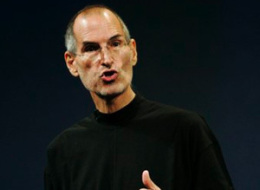
![Reblog this post [with Zemanta]](http://img.zemanta.com/reblog_e.png?x-id=49a5d0b1-99fb-45a0-870e-47268cbf9499)
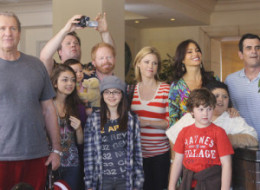
![Reblog this post [with Zemanta]](http://img.zemanta.com/reblog_e.png?x-id=3839bd19-5d25-4f9f-a3f1-b39a51cf673a)
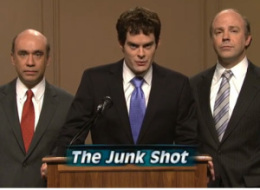
![Reblog this post [with Zemanta]](http://img.zemanta.com/reblog_e.png?x-id=cf4fae3c-e277-4676-97e7-5b8441ea99f6)
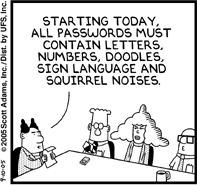
![Reblog this post [with Zemanta]](http://img.zemanta.com/reblog_e.png?x-id=d852aaa6-1bb8-41de-8783-77dcb695f28f)

![Reblog this post [with Zemanta]](http://img.zemanta.com/reblog_e.png?x-id=3654137a-1230-4954-8452-41db0d096031)


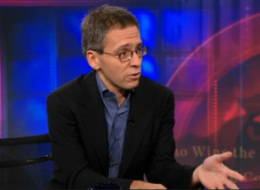
![Reblog this post [with Zemanta]](http://img.zemanta.com/reblog_e.png?x-id=1a40b288-c480-47a0-bc62-99bde14ab818)